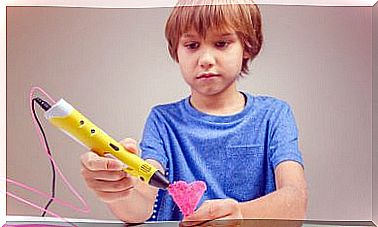Differences Between Positive And Negative Reinforcement

Reinforcement is a good educational method for correcting children’s behavior. As its name implies, this technique focuses on reinforcing, in some way, desirable behaviors, to encourage them to happen frequently. Thus, at the same time, the appearance of inappropriate behaviors will be avoided. But to apply this psychopedagogical resource correctly, it is necessary to know the differences between positive and negative reinforcement.
This behavior modification technique is based on the theory of operant conditioning, created by psychologist Burrhus Frederic Skinner.
Thus, according to this author, behavior is determined by the consequences obtained with such acts, so that behaviors followed by a reward tend to be repeated and those that provide harmful results are not repeated.
Differences between positive and negative reinforcement
Associative learning is a process that consists in creating cause and effect relationships between behaviors and stimuli, which is very useful to change children’s behaviors and intervene with them.
One way to implement this kind of learning is through positive or negative reinforcement. Next, we’ll explain the differences between these two types of reinforcement.

positive reinforcement
Positive reinforcement consists of presenting a pleasant stimulus immediately after performing a good behavior. That is, when the child behaves well or has a desired behavior, it is convenient to reward or reward him to increase the probability that such an act will be repeated in the future.
Thus, some stimuli that are generally used as positive reinforcements are:
- Praise.
- Hugs.
- Kisses.
- Caresses.
- Attention demonstrations.
- Stickers.
- Stamps.
- Obtaining certain privileges.
- Recognition and good evaluation.
- Food.
- Special tours, trips or activities.
- Obtaining points to win a physical prize, such as a toy, for example.
negative reinforcement
On the other hand, negative reinforcement consists of removing an unpleasant stimulus to increase the frequency of occurrence of a desired behavior. Therefore, as in the previous case, reinforcement should be applied immediately, right after the child has acted correctly.
Some aversive stimuli that are generally used as negative reinforcers, through their withdrawal or elimination, are:
- Bright lights.
- Loud noises.
- Reviews.
- Punishments.
- Censorship.
Benefits of using positive and negative reinforcement
Both positive and negative reinforcement are very effective and beneficial for the child’s development, as this educational method focuses on encouraging and improving good habits, without the need to penalize and punish bad behavior.

That is, thanks to the fact that it reinforces desirable behaviors, the appearance of undesirable behaviors is avoided. Thus, the little ones learn that, through good behavior, it is possible to achieve a certain personal satisfaction.
In addition, the use of reinforcement also entails the following benefits for the child:
- It increases the motivation to do what’s right.
- Improves self-esteem and self- concept.
- Promotes positive communication.
- It encourages the establishment of healthy and balanced social relationships.
- Promotes receptivity.
- Encourages the importance of effort.
But for this to happen, it is necessary to keep in mind that when applying reinforcement, both positive and negative, it is essential to explain the reason for the reward.
That is, it is necessary for the child to understand what behavior allowed him to obtain a pleasant consequence. In this way, she will understand and assimilate the cause and effect relationship that occurs in a given situation.








